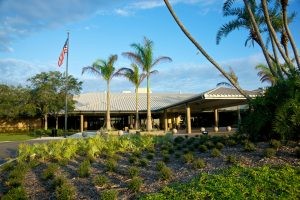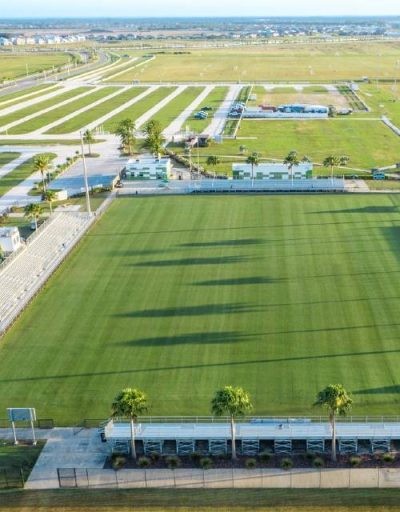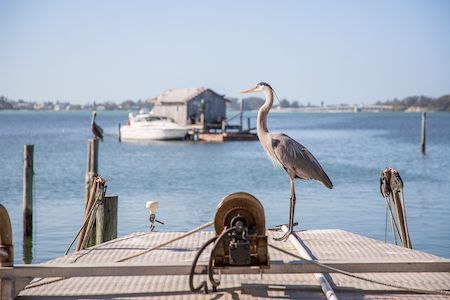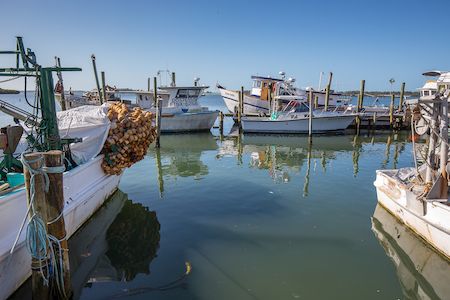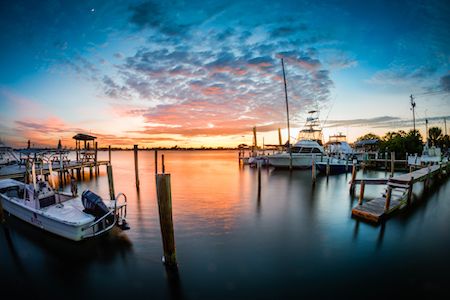Timeless Cortez
Timeless Cortez
Pre-dawn, a fishing captain pulls up to his dock with his catch. In the distance, pelicans bob in the water. Overhead, seagulls soar, waiting to swoop in and pick up whatever scraps are thrown overboard. As the sun rises, the smell of the sea hangs heavily in the air. For most, this sounds like a scene from a movie. But for the residents of this sleepy waterfront enclave, it’s just another day unfolding as it has for generations of Cortezians.This is Cortez, one of the last active commercial fishing villages in the Florida Gulf. There are no high-rises, amusement parks or million-dollar waterfront condos. Instead, you have a small community of weathered old wood-framed bungalows with tin roofs and white fences, fish companies, fishnets, crab traps, floats, and lots of boats of every kind, shape, age and condition.If it weren’t for a mural to mark your arrival, you might drive right past and never know. The village comprises about 10-blocks — about two square miles in all — skirting Sarasota Bay in the Bradenton Area. And still, it attracts tens of thousands of visitors every year, who come to eat in one of the classic Florida fish shack restaurants that hug the shoreline.
Shelter from the storm
Cortez’s fishing history goes all the way back to the Native Americans (the Calusa, also a maritime people) and the Spanish explorers who soon followed. But its modern history dates to the 1880s, when a half dozen fishing families fled North Carolina (Beaufort, to be exact, according to legend) after a series of hurricanes slammed the Grand Banks. Today, their names are revered: the Guthries, Bells, Taylors and Fulfords. Many of their descendants still live in the village.
Originally known as Hunter’s Point, the new site was sheltered by barrier islands but not closed in. Nearby passes offered access to north Sarasota Bay, Tampa Bay and the Gulf of Mexico — and more fish than anyone could count.
When the post office arrived in 1896, they gave the little town an official name: Cortez. Despite the name change, the rhythms of daily life remained the same.
Weathering history
Making a living from the sea is not for the faint of heart. It’s hard, back-breaking, dangerous work. As a result, fishing people are tough by nature, an attribute that’s served the people of Cortez well on numerous occasions. Neither tropical depressions nor economic ones could drive them away, though they tried.
The founding families came to Cortez to escape the storms that afflicted the east coast. But they couldn’t hide forever. The hurricane of 1921 pushed its way past the barrier islands and scrubbed the village clean with over 100-mile-an-hour winds. But this time, the fishermen weren’t going anywhere.
They just rebuilt and went back to work.
During the Great Depression, Cortez was one of the few American communities that rejected federal aid. For everyone else, jobs were scarce. But the fish were plentiful. So, they kept on fishing. When Florida farmers couldn’t pay, they turned to trade — fish for fresh produce — and nobody starved.
Celebrating the sea life
The Cortez Commercial Fishing Festival is a celebration of the village and the fishing heritage it preserves. And it’s no small affair. On the third weekend in February each year, the festival attracts more than 20,000 people, according to organizers. They come to sample shrimp, oysters and smoked mullet — a local favorite — as well as nautical arts and crafts, live music and numerous displays on marine life and commercial fishing.
The festival is sponsored by the Florida Institute for Saltwater Heritage or FISH, a non-profit group established in 1991 to preserve and promote Florida’s traditional maritime culture, folklife, skills, values, and Florida’s commercial fisheries. The organization has instrumental in getting Cortez recognized as a historical landmark. Ninety-seven of its buildings are now on the National Register of Historic Places.
Today, FISH main focus is to protect and restore the land from development. Driving down Cortez Road, you may notice a large sign that reads, FISH Preserve. This is about 100 acres of environmentally sensitive land FISH purchased to act as a buffer between the historic fishing village and development.
Returning this land and water to its natural state, by removing trash and invasive species of flora and fauna, protects the commercial fishing industry by protecting a key fisheries habitat. For years, this mangrove-lined area of Sarasota Bay just south of Cortez has been referred to as “The Kitchen” because it was where the locals went to catch seafood to trade with farmers and feed their families.
Where heritage calls home
In addition to FISH, there are two places where you can learn more about the history and maritime culture of Cortez.
One is The Florida Maritime Museum, which tells the in-depth story of the town with exhibits and artifacts — include navigational instruments, fishing gear, and the seashell collection of one of the town founders. The museum is housed in a brick building constructed in 1912 as a schoolhouse and sits on about four acres of the Cortez Nature Preserve.
At the Cortez Cultural Center, located inside the historic Monroe Cottage — an old schoolhouse from 1912 — the focus is on “old Florida” history and stories of founding families, told through photographs, recordings, furniture, clothing and more. Starting with the Guthrie and Fulford families in 1880, you can travel through war times with Cortez women, who went to sea while their husbands fought for freedom. For now, the timeline stops in the 1980s, but eventually, the center will document the village’s history to the present day.



